NEMAA Artist Series: Pluralism in Motion
Painter Farida Hughes captures the temporary intimacies of people mingling and moving through space, by way of vivid, fluid, aerial-view abstractions

introductionThis is the eighth in a sponsored series of articles featuring member artists of Northeast Minneapolis Arts Association, a non-profit arts organization that works to build a more vibrant, diverse and economically healthy community through the arts.
There are no hard lines in Farida Hughes’ paintings, no rigid angles or fixed grids. Her abstract forms appear as vivid, loosely bound cells – some are conjoined, others just barely touching, many of them clustered in groups; a few are left to stand alone. There’s a sense of movement in her works, of imminent but capricious flux between, among, and around the constituent elements. She says, “I’ve always been fascinated by flocking birds, butterflies, schools of fish, crowds of people; I’m interested in watching how they move, particularly as they navigate the edges of the landscape.” In fact, her first paintings were landscapes, she says. “But when I took the horizon line out, it opened the world to me,” she says, “stripped things down to movement in space.”
“My husband once said, I’m a blend of city girl and farm girl,” Hughes says. She grew up in New Jersey, and she’s comfortable in the confines of urban spaces, but she also lived for many years in rural South Virgina. It was an impoverished area, she remembers, struggling at the time she lived there with a downturn in fortunes: unemployment and steady declines in population with the loss of the tobacco industry. But the residents of that rural town still lived among the remnants of its heyday, surrounded by a bereft built landscape their population could no longer support. “And you’d still have people moving through these spaces, but differently now that they were no longer in active use,” Hughes says. “Of these buildings, people still visited the church, the club, but you’d have to leave town for practical things, to get to shopping, performances – anything to do with the arts.” She found herself watching how people navigated those barely used byways, how they moved through, but no longer dwelled in, those little-used spaces.
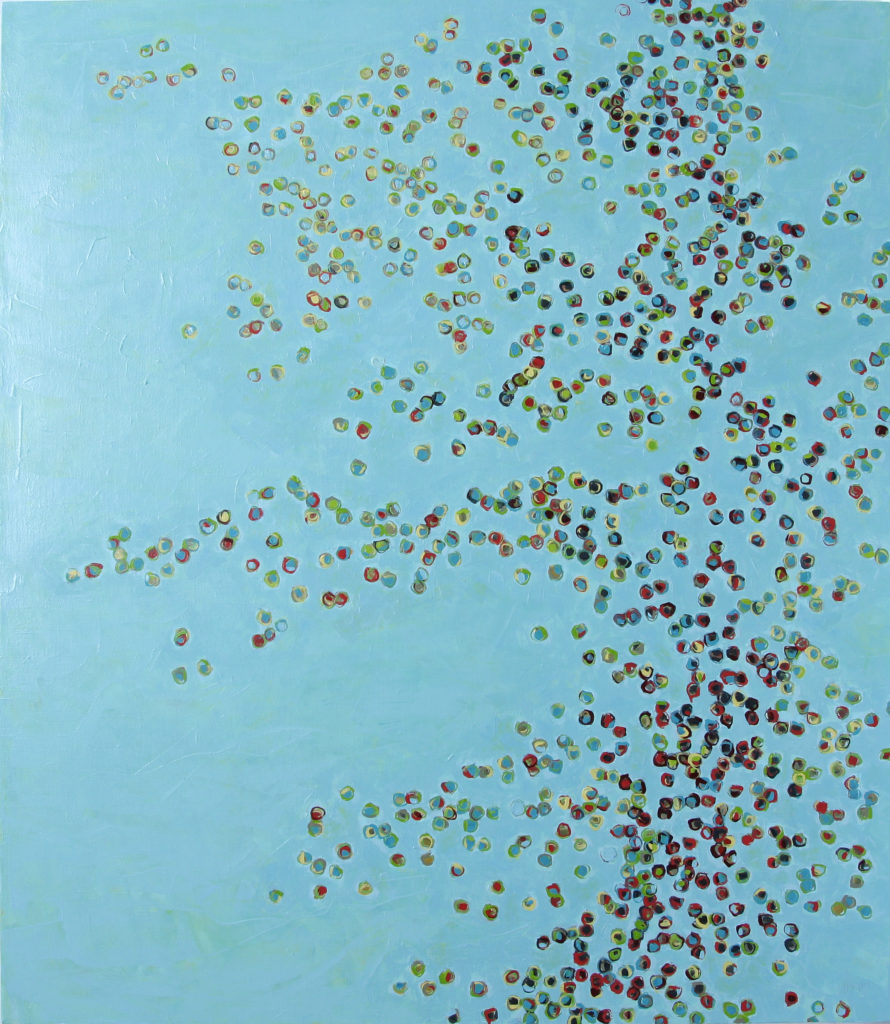
Farida Hughes, Beaches. Oil on linen, 2013 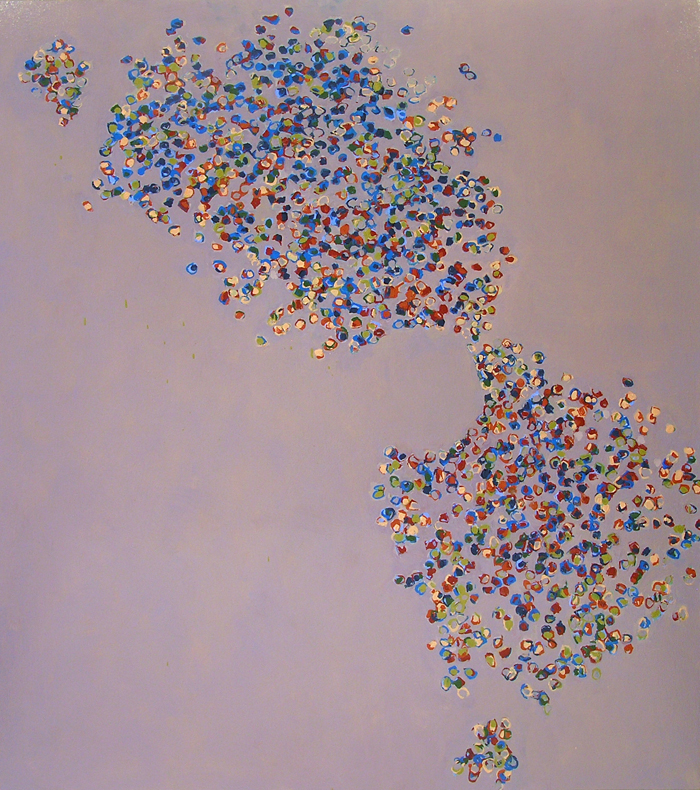
Farida Hughes, Gathering. Oil on canvas, 2009 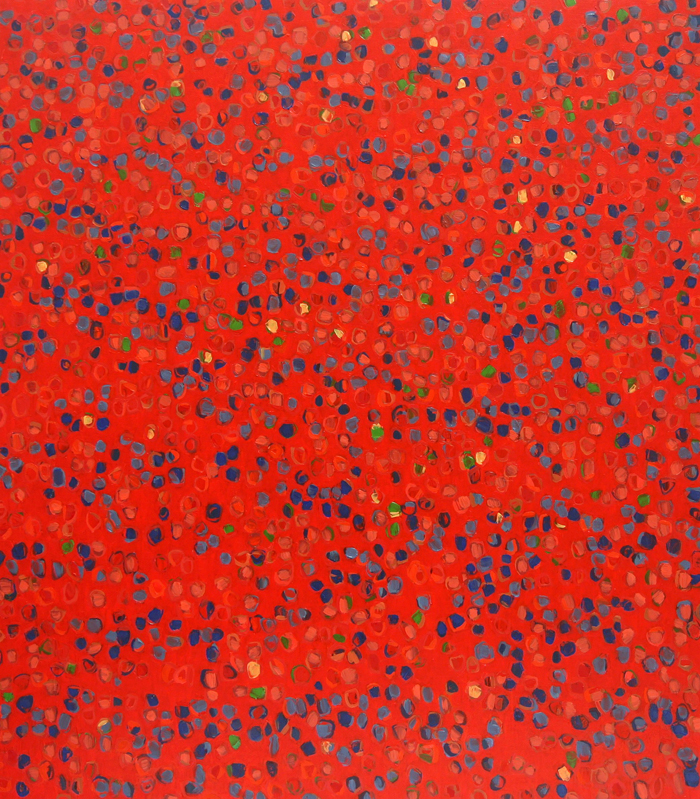
Farida Hughes, Actors and Spectators. Oil on linen, 2014 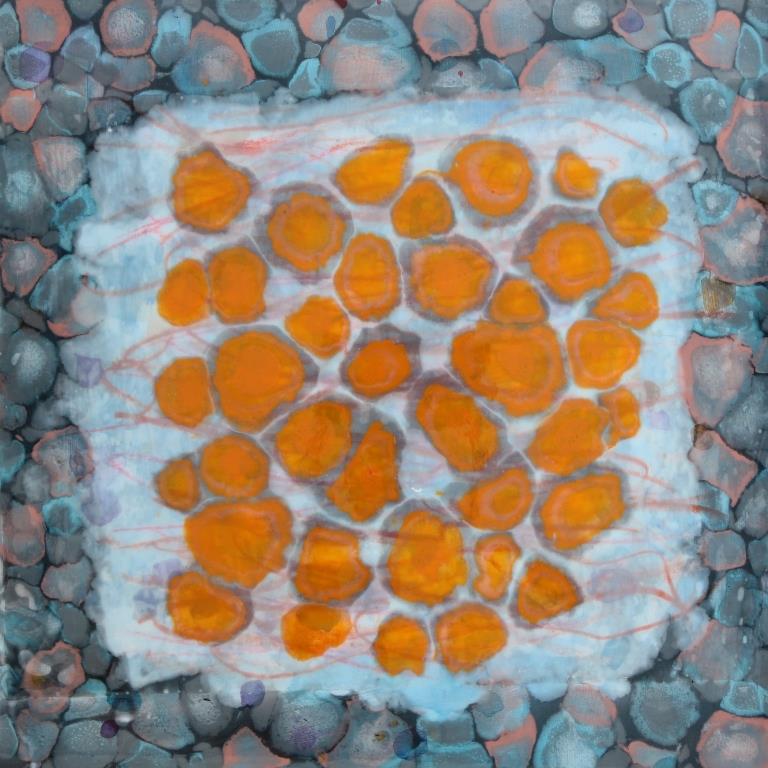
Farida Hughes, Wander 5 Square. Oil, mixed media, and resin on board, 2016 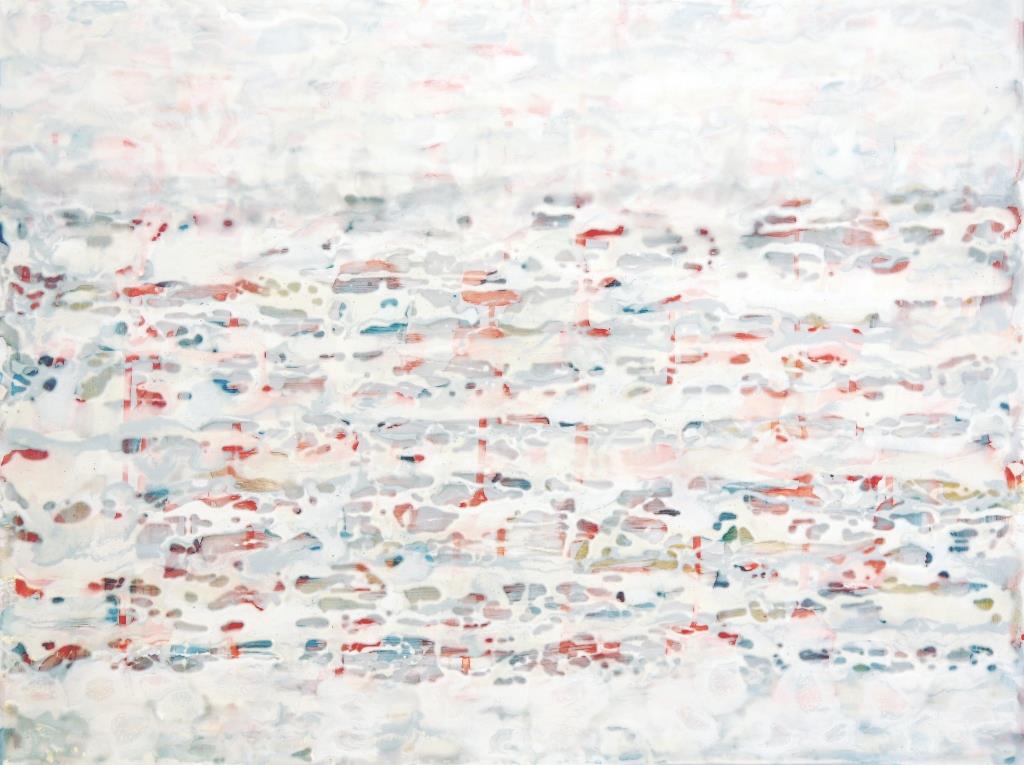
Farida Hughes, White on White 1. Oil, mixed media, and resin on board, 2016
She says she started paying attention to pathways, more generally. Specifically, she noted the attractions and repulsions of spontaneous groupings of people, how they alternately forge ahead alone or mingle together to move about and through shared environments. Her eye is drawn to edges – alleyways, borders, and corners – she says, not for the pathways themselves, but for the wayfinding that happens as living things work, singly and together, to navigate them.
She has a series of paintings that are abstractions of spectators along the edges of parade routes; other works offer aerial views on abstracted congregations of beach-goers, or skaters in a rink. “People never gather themselves in straight lines, you’ll notice,” she says. “Even crowded together, we tend to cluster and self-segregate, constantly realigning ourselves as individuals enter and leave the group.” She describes her work, in her artist statement, as explorations of the “intimacies and relationships created in temporary spaces, either staged or spontaneous, at public areas used for passage, performance, exhibition, protest, and celebration.”
“There’s an energy that manifests when people gather,” Hughes says. And it’s at once political and personal, if not entirely conscious, “how we choose to move through space, individually and together.”
She removes the grids and fixed pathways around which her forms move in the frame – centering the eye’s focus on the collective movement at the heart of the composition as seen from above, following the structural paths that shaped its flow by way of the negative space left behind. “The world doesn’t stop, but rather moves along and off the edges,” she says. “I want my paintings to reflect that; the movement is primary, to me.”
Hughes says she’s inspired by the activity of the painting itself, the gestures and materials of the work of making it: “Color is a dominant driving force; I do thumbnail sketches when I have an idea, but it’s when I’m in the studio, actually making the work, that it comes alive,” she says. “I love the luminosity of oil, the fluidity; and then, in 2012 and 2013, I started working with resin, too – pouring color directly into the piece, and then painting with it.”
“There’s an energy that manifests when people gather,” Hughes says. And it’s at once political and personal, if not entirely conscious, “how we choose to move through space, individually and together.” In her paintings, there are no distinct figures, no hard edges of demarcation; her interest in the fragile activity of connection in motion is evidenced by the “mark of the hand among and between the abstract forms, linking them in all kinds of unfettered, unplanned,” but no less significant ways.
In an email exchange after our studio visit, Hughes shares some final thoughts. “At the heart of my work are questions: What is it that causes or incites collective group emotion? How is it that groups perform and react as a ‘body’ in a certain way, feel an energy together, and remain comprised of individual parts?” More broadly, she says she’s also thinking about “what social, economic, cultural or traditional forces bind people together across differences?” She says, while her work isn’t expressly political in nature, her background in a “dual ethnic/dual religion household” certainly informs the substance of her concerns – she’s invested in pluralism, committed to the pursuit of tolerance and ways we might better understand one another. “When I paint, I think of myself as observing and recording what I see in how we move together” in an effort to show the nuances of both what we hold in common and our differences.
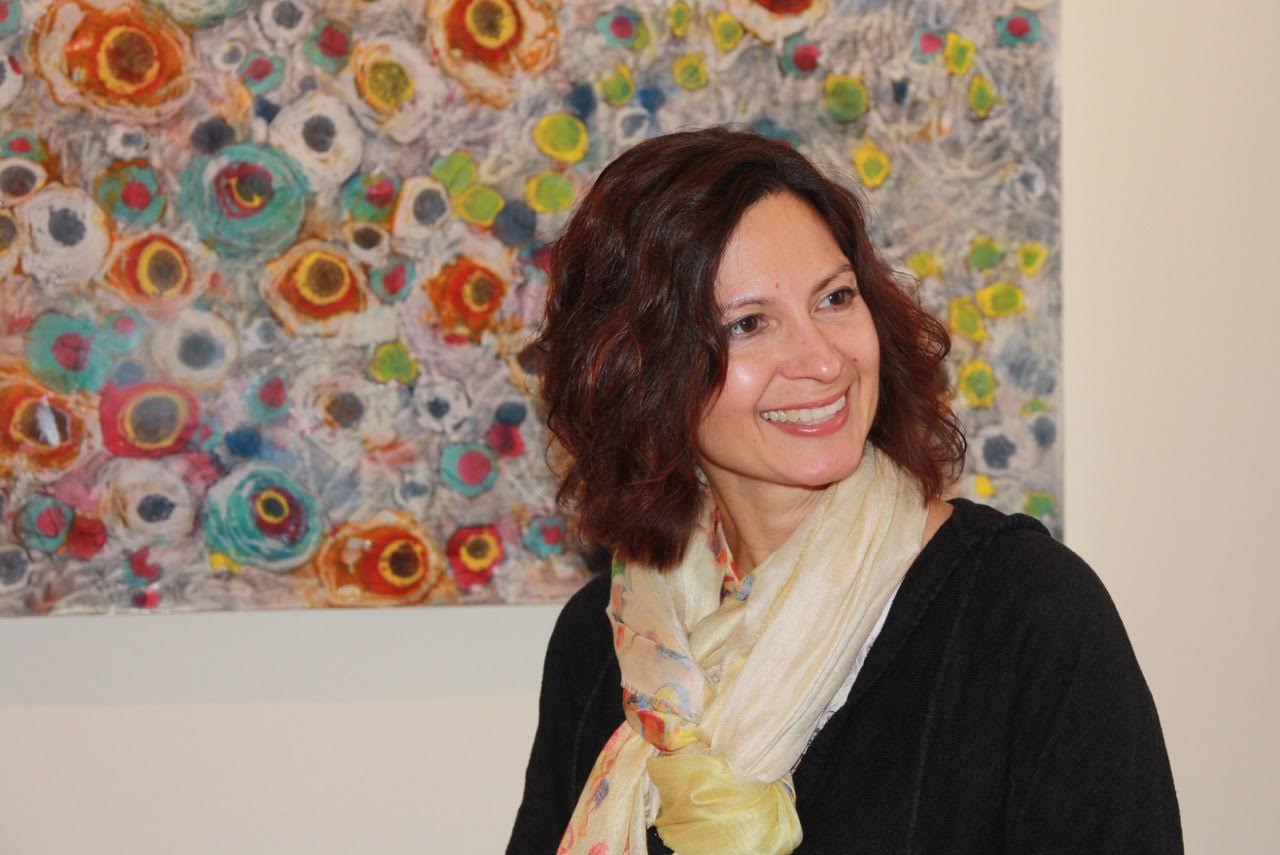
Related links and information: See more work by Farida Hughes on her website: www.faridahughes.com. You may visit her studio in the California Building by appointment.